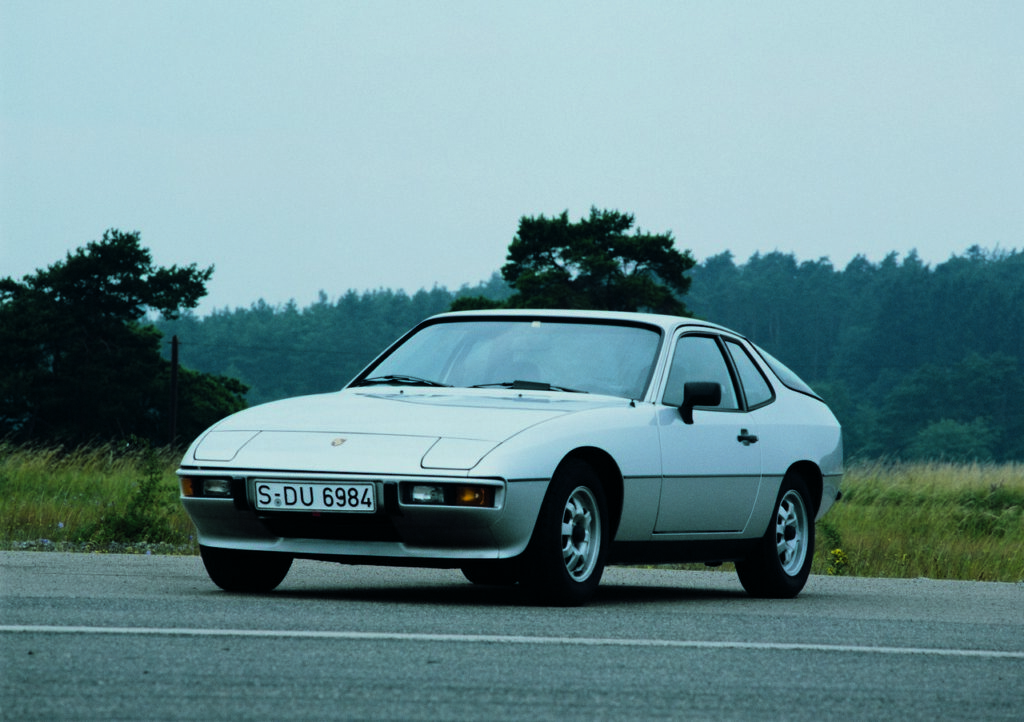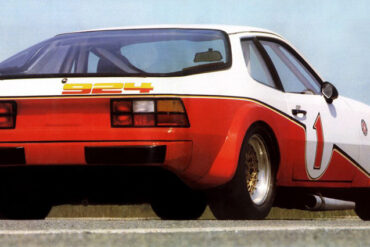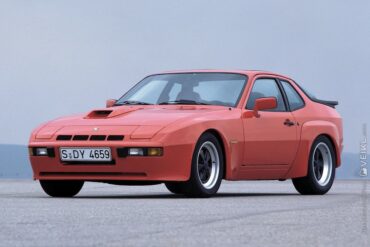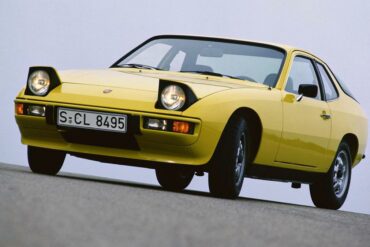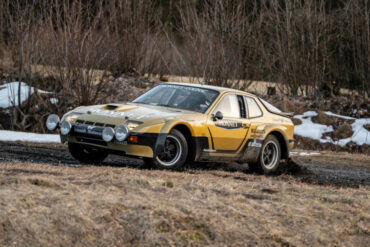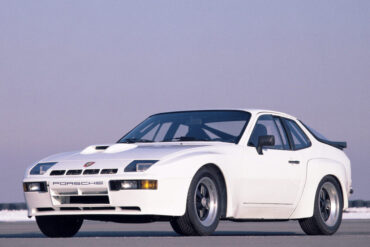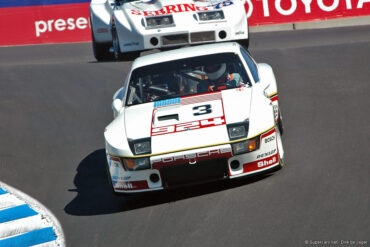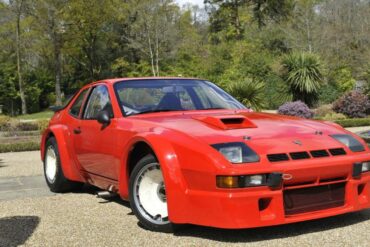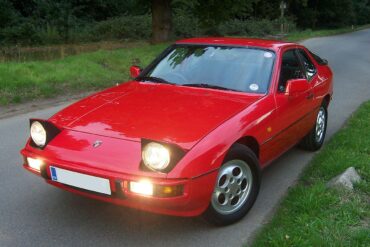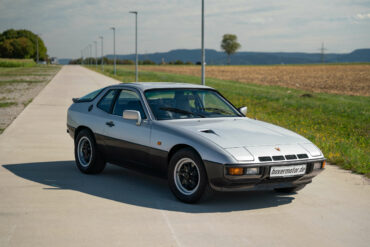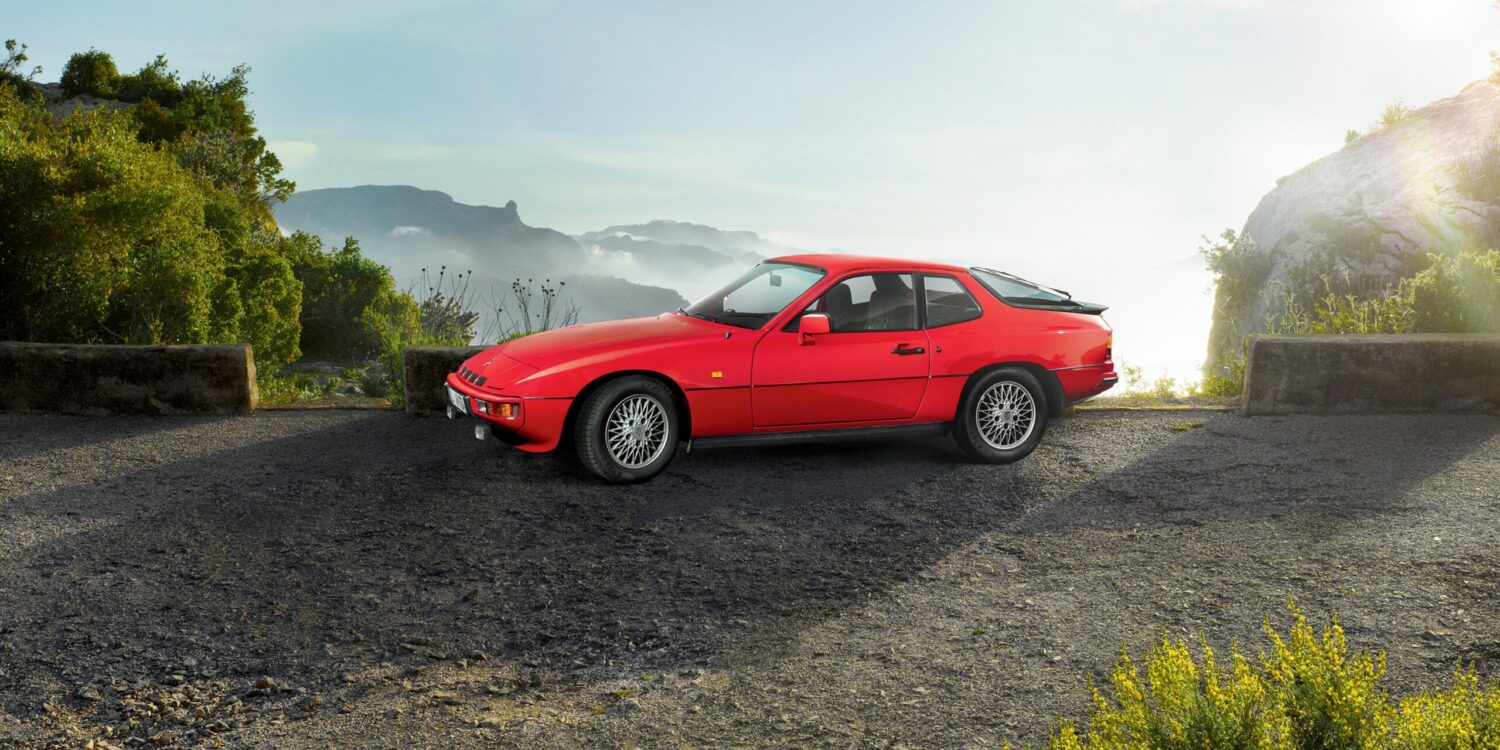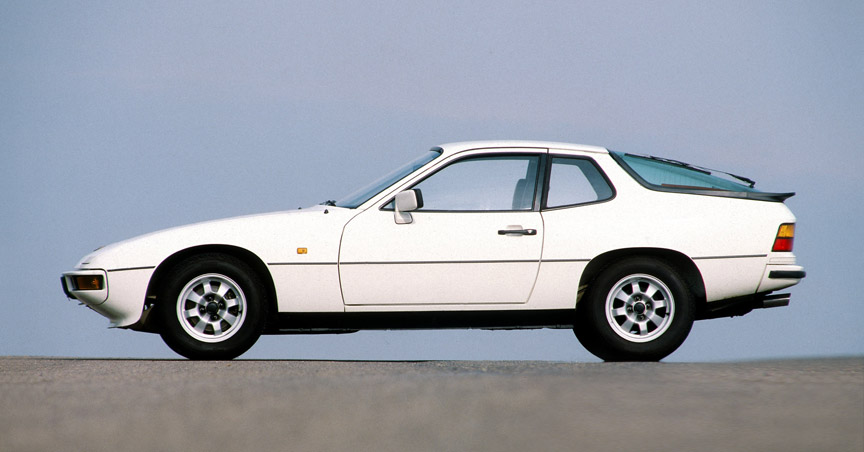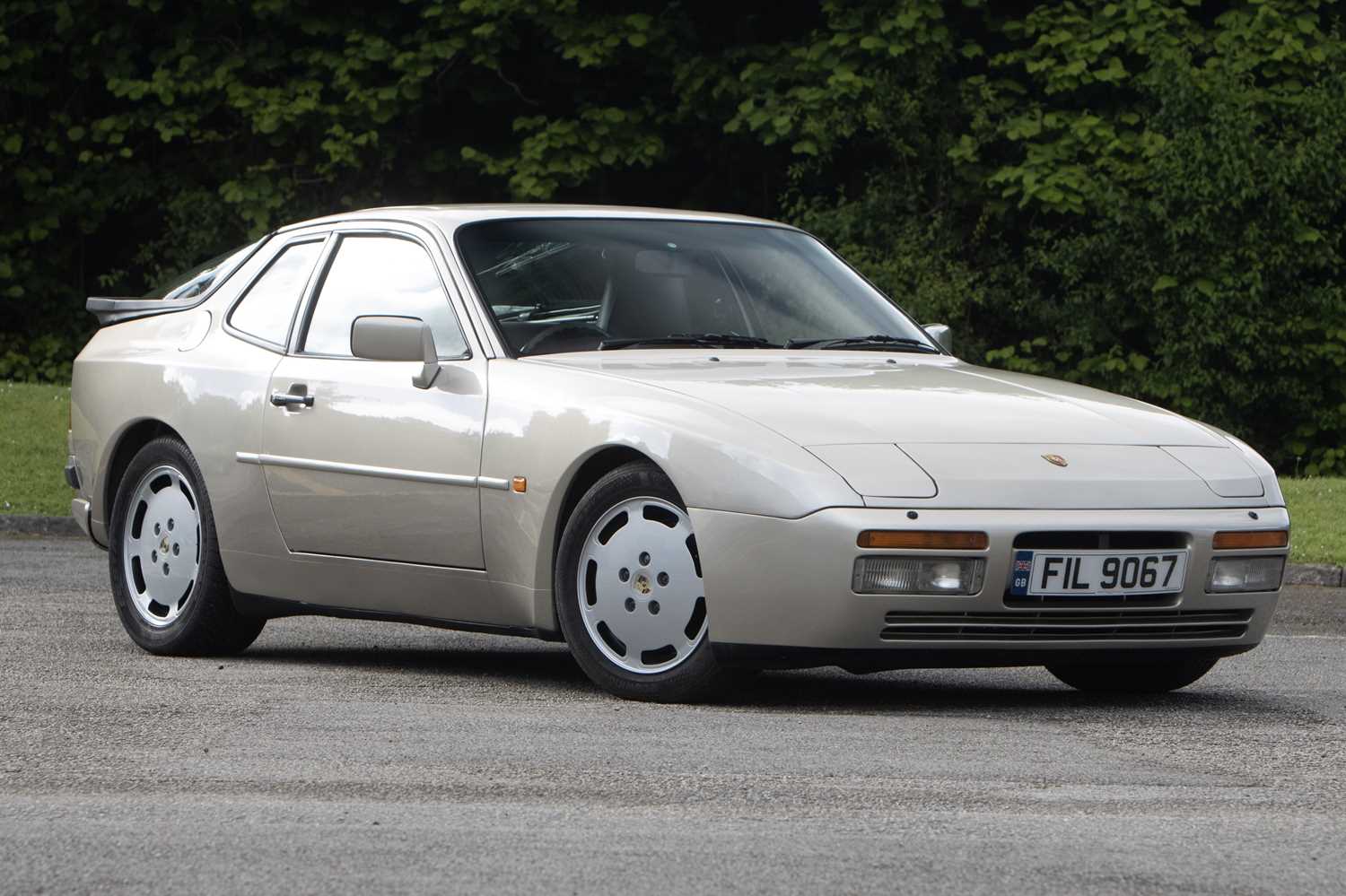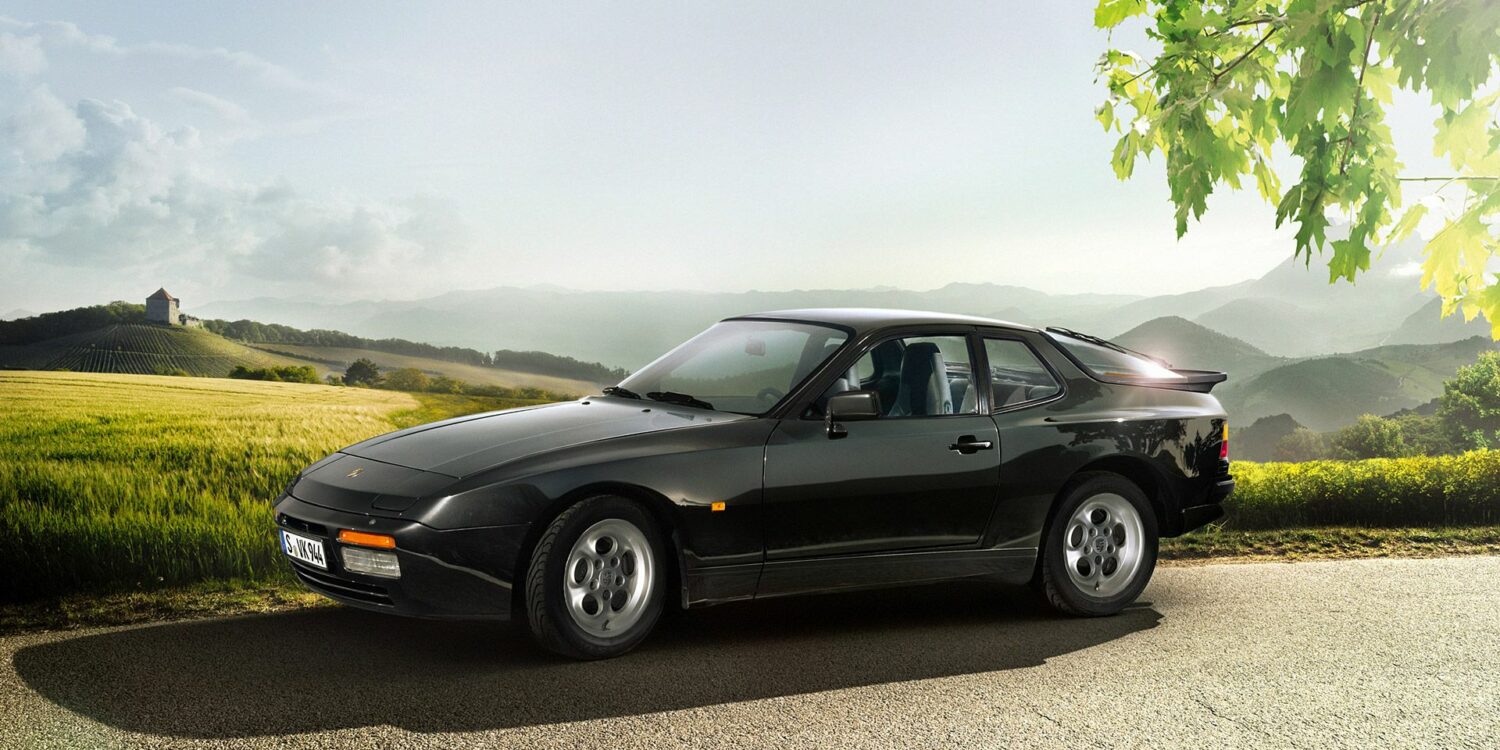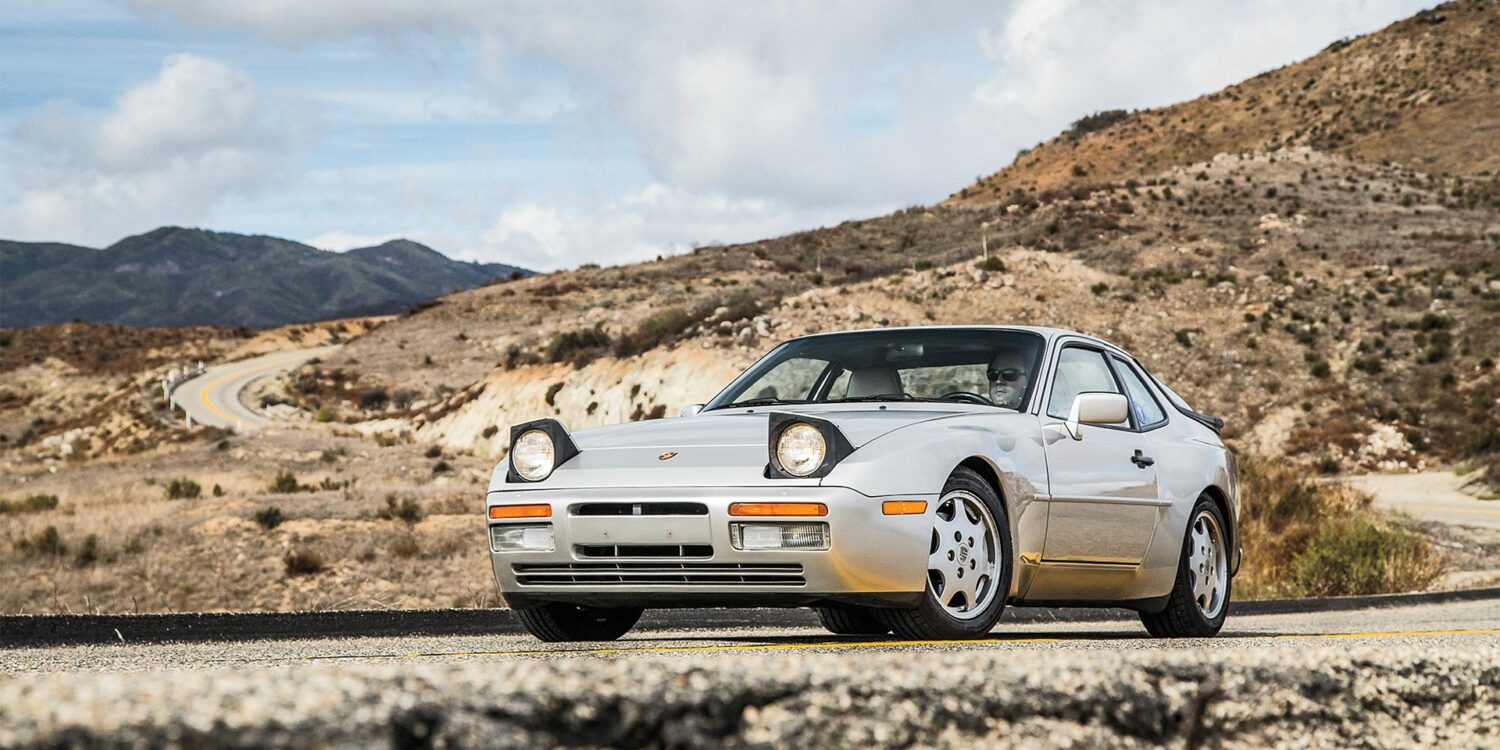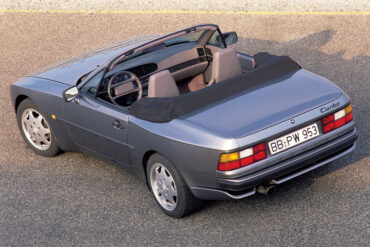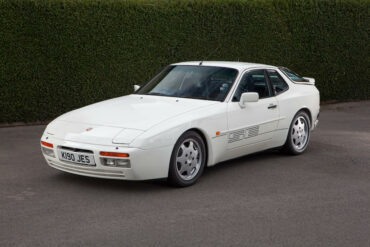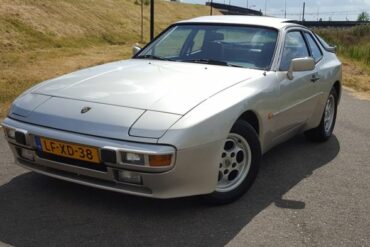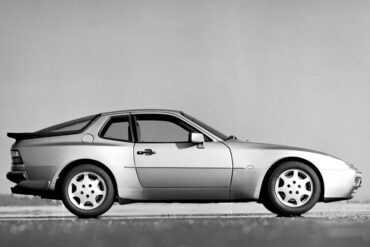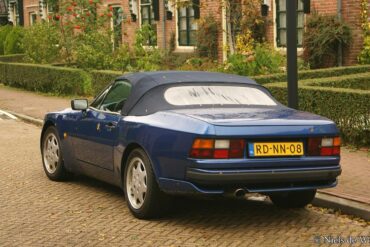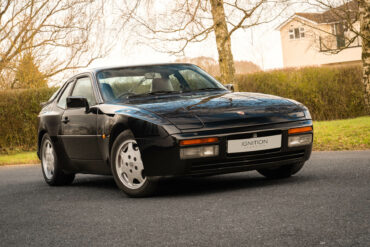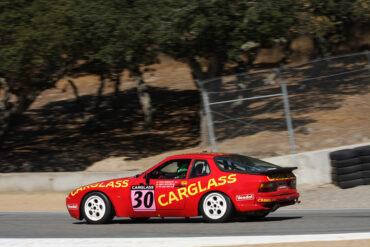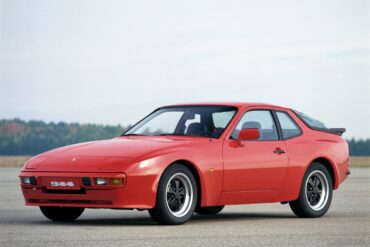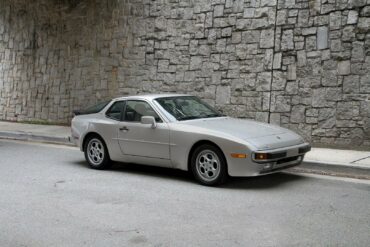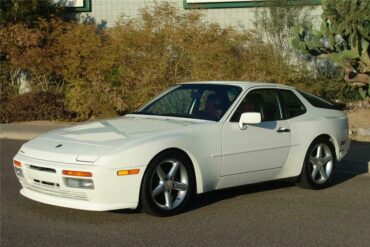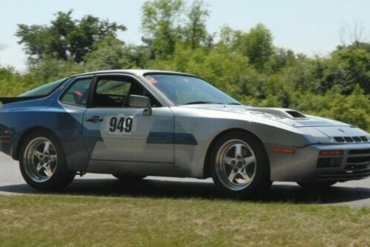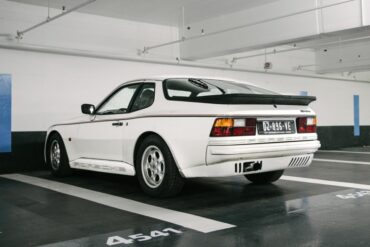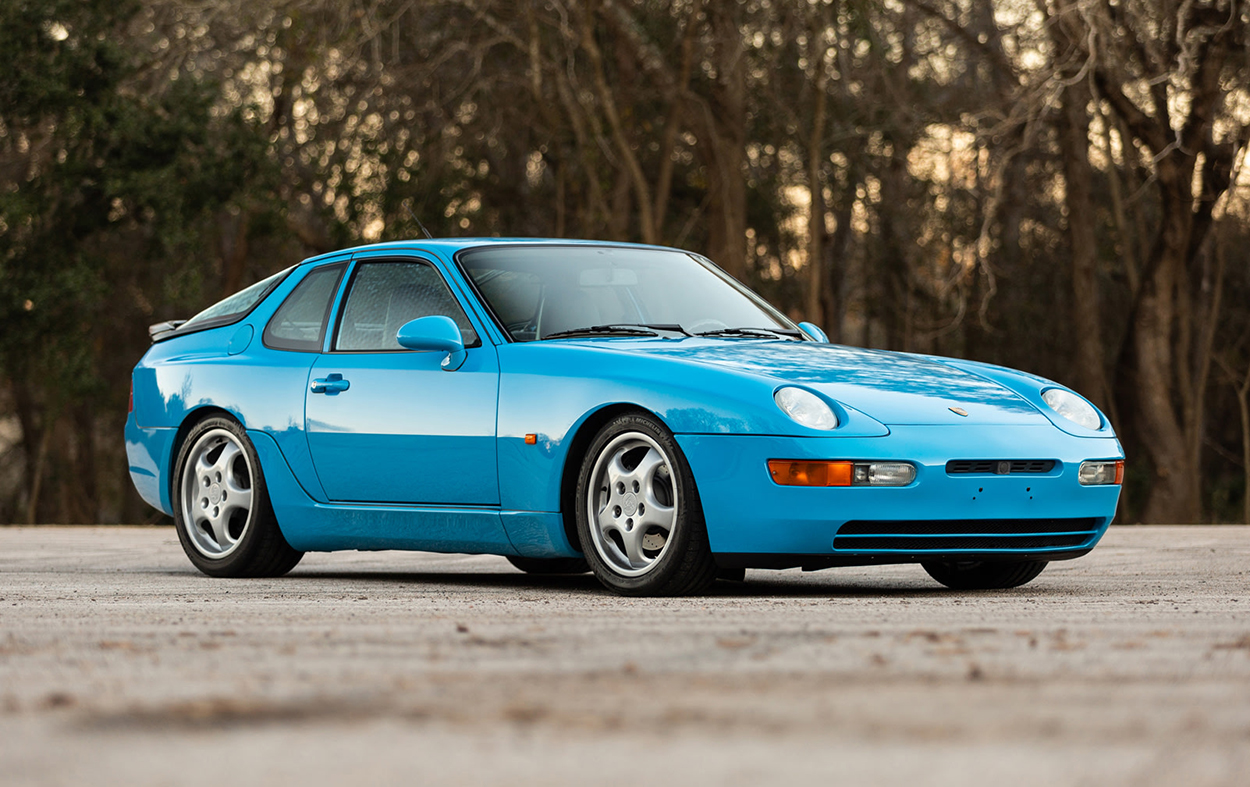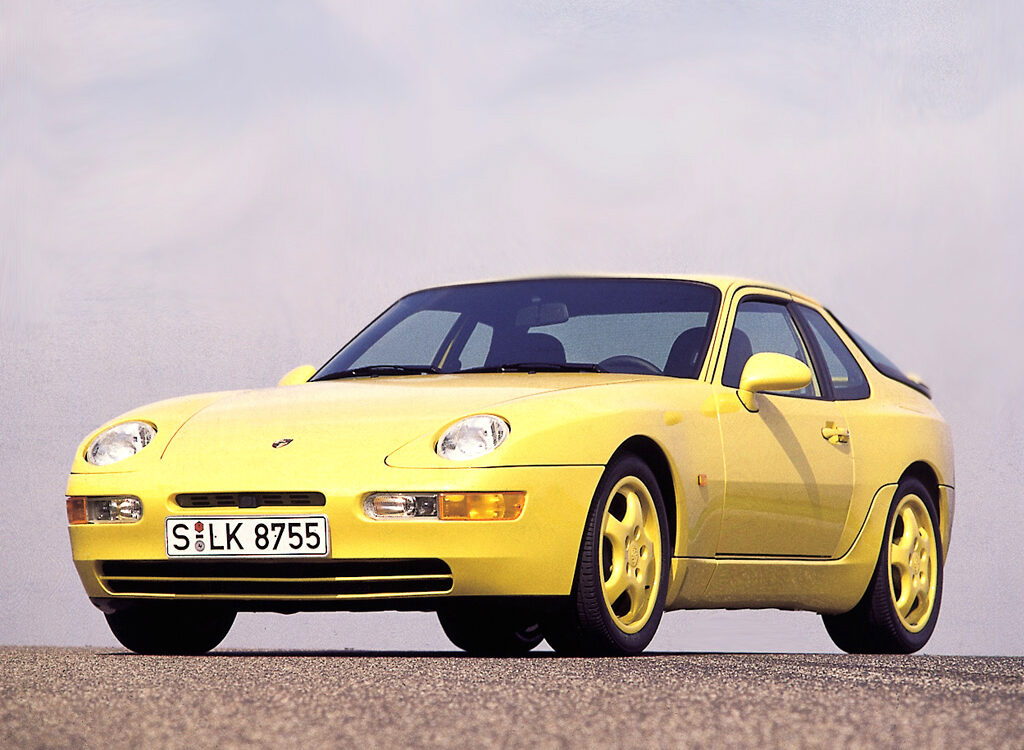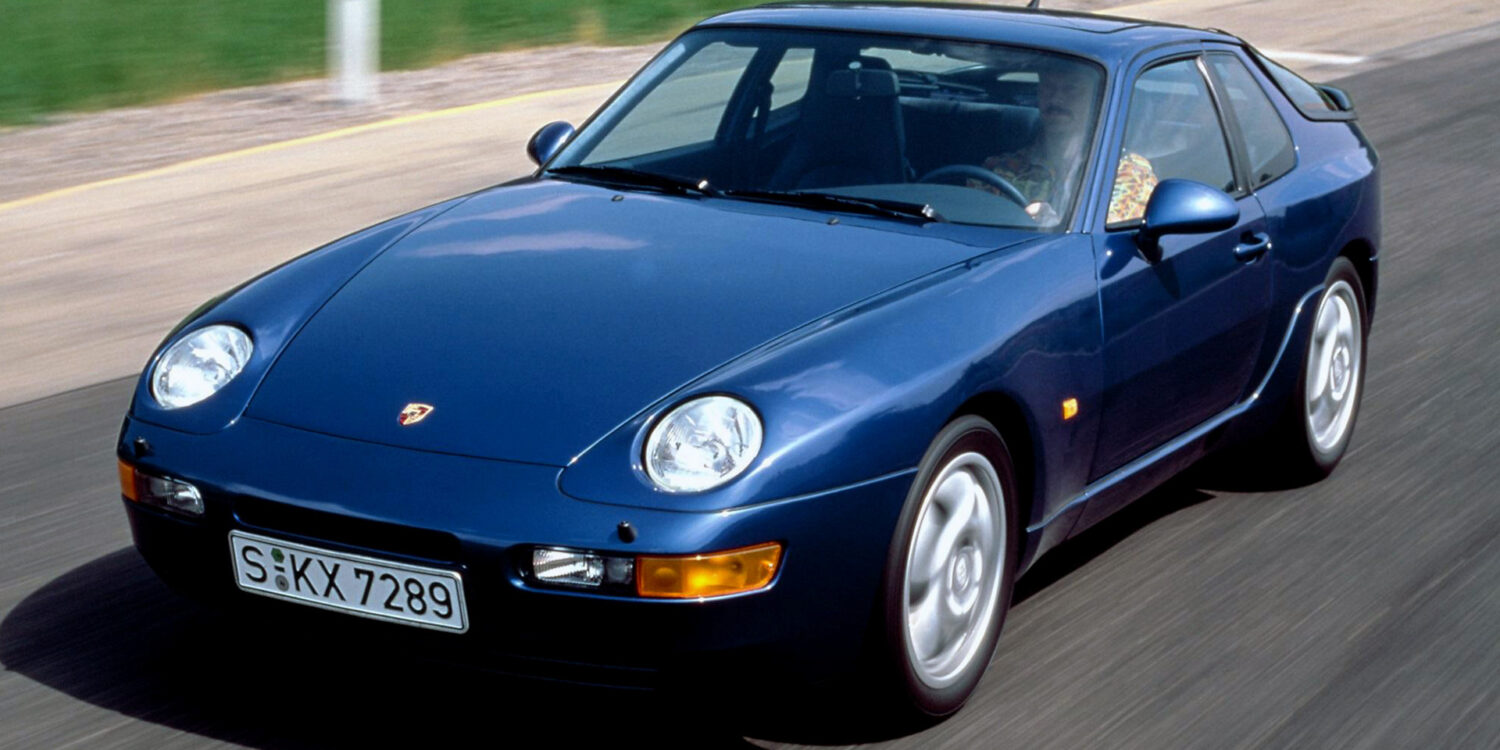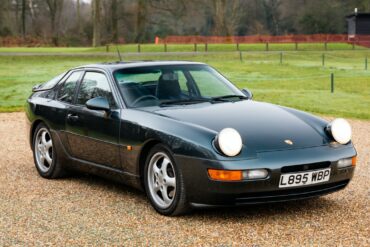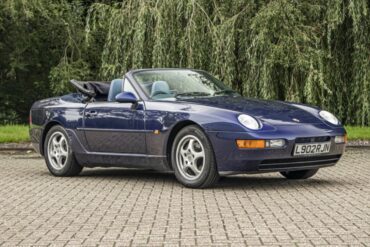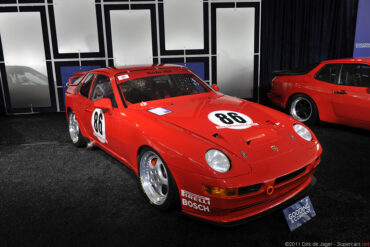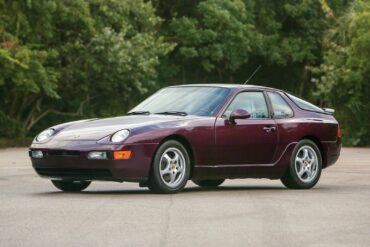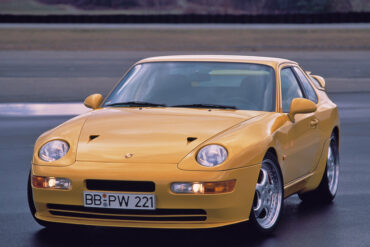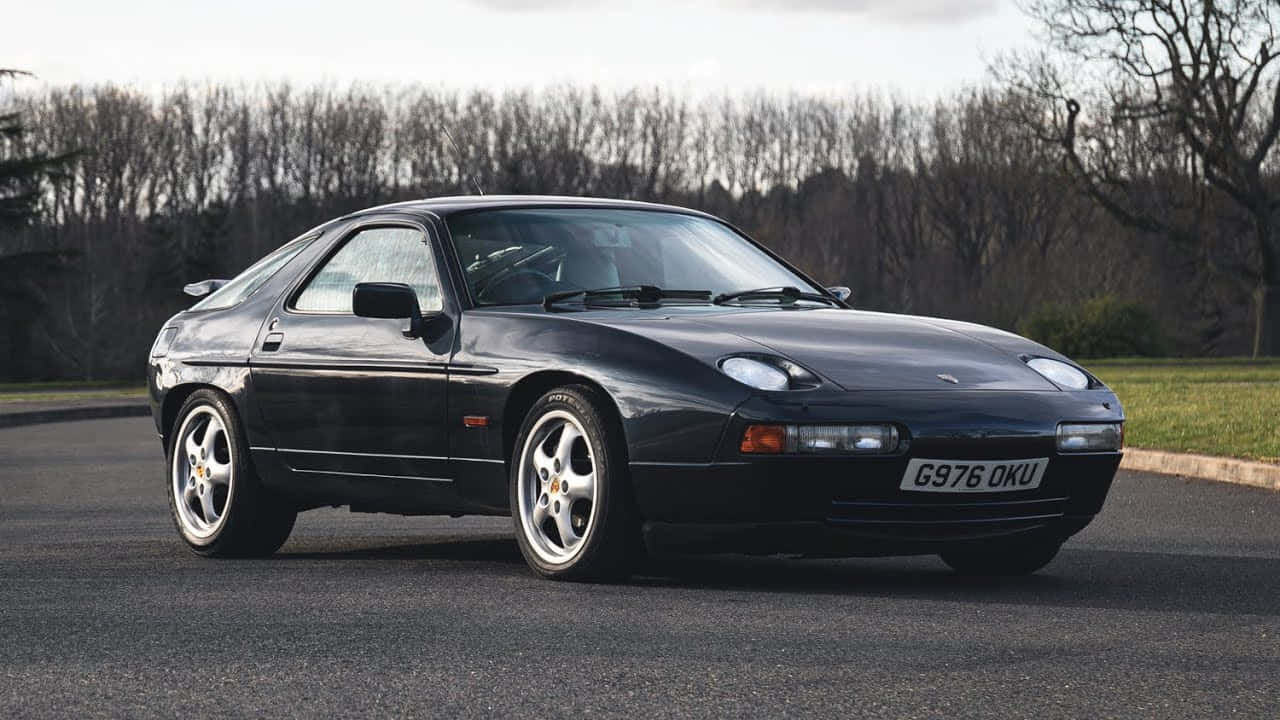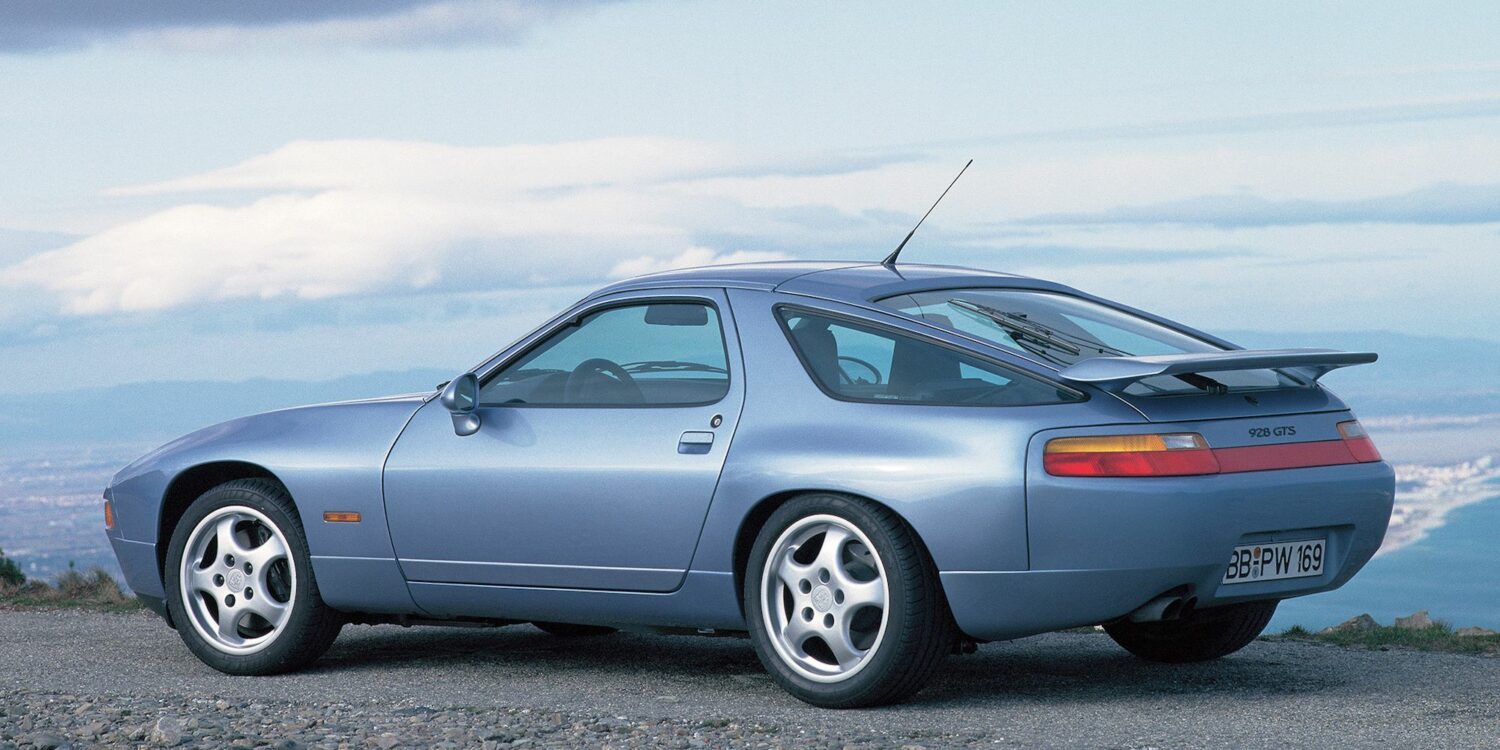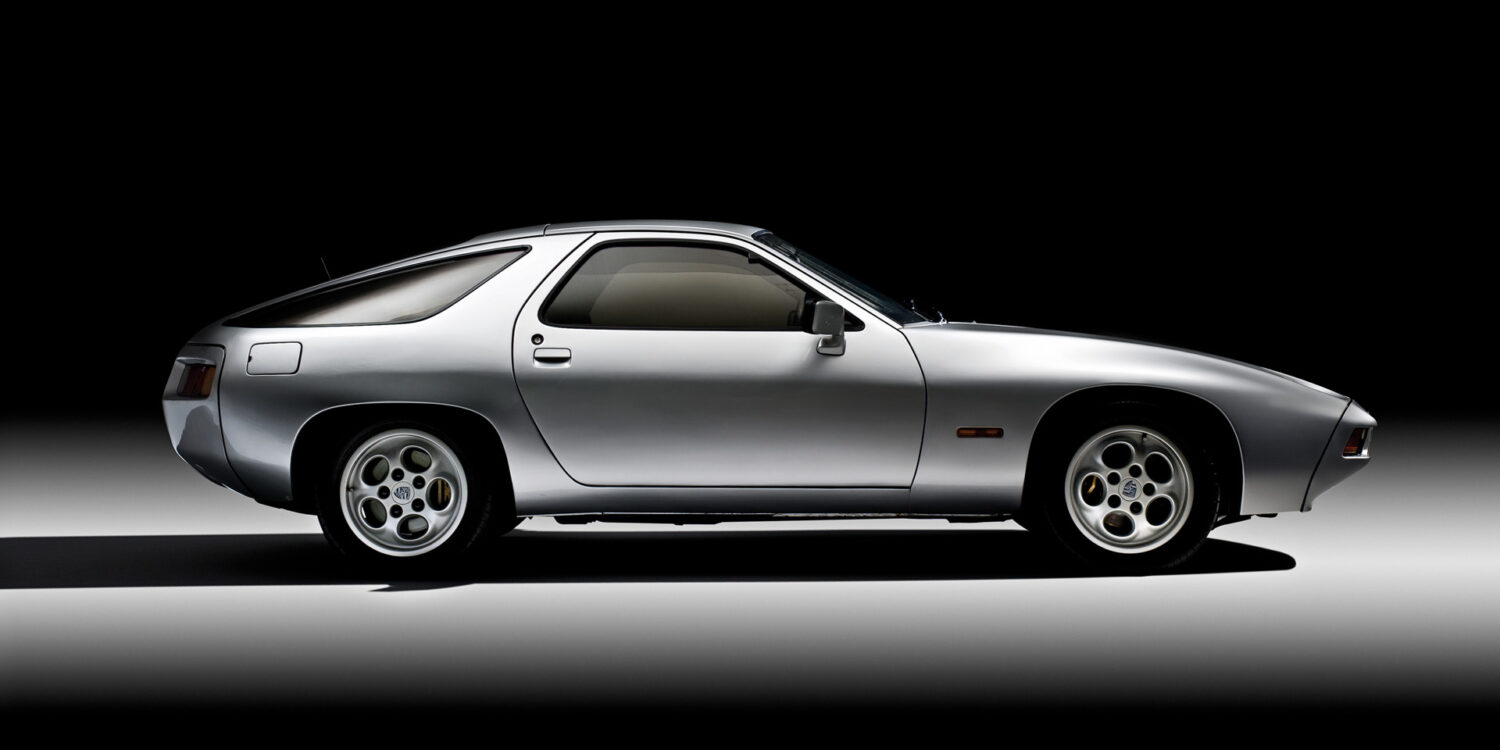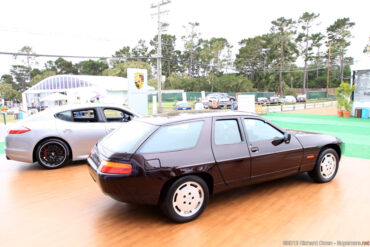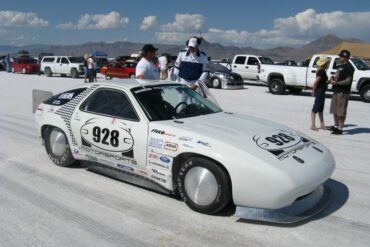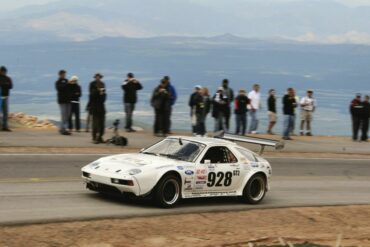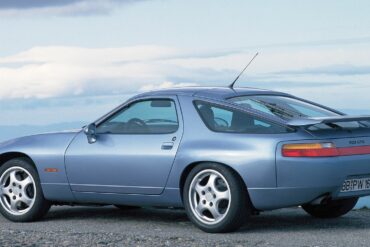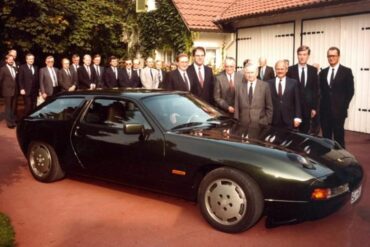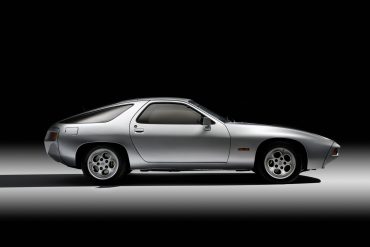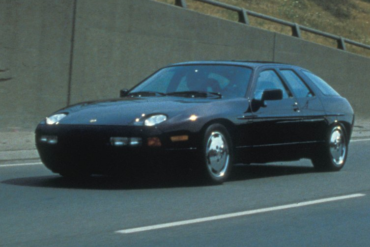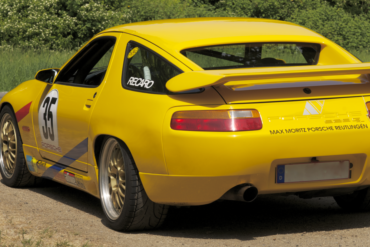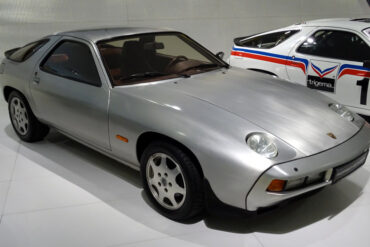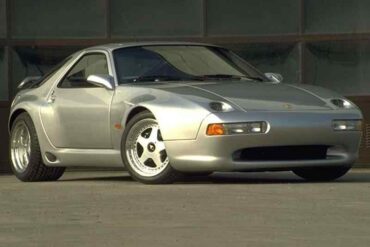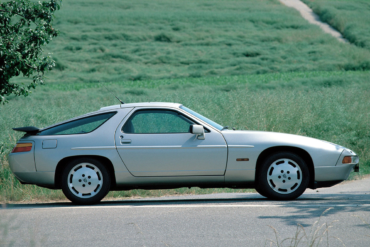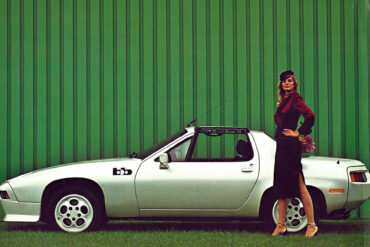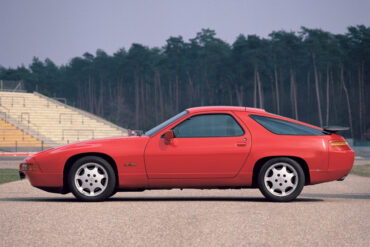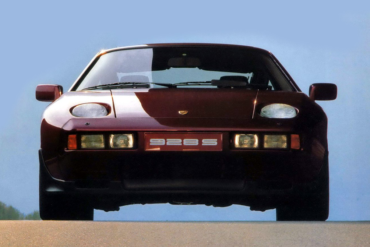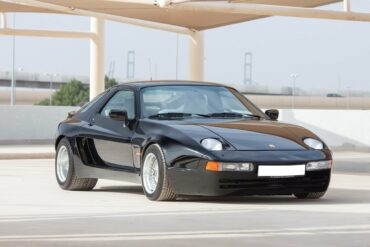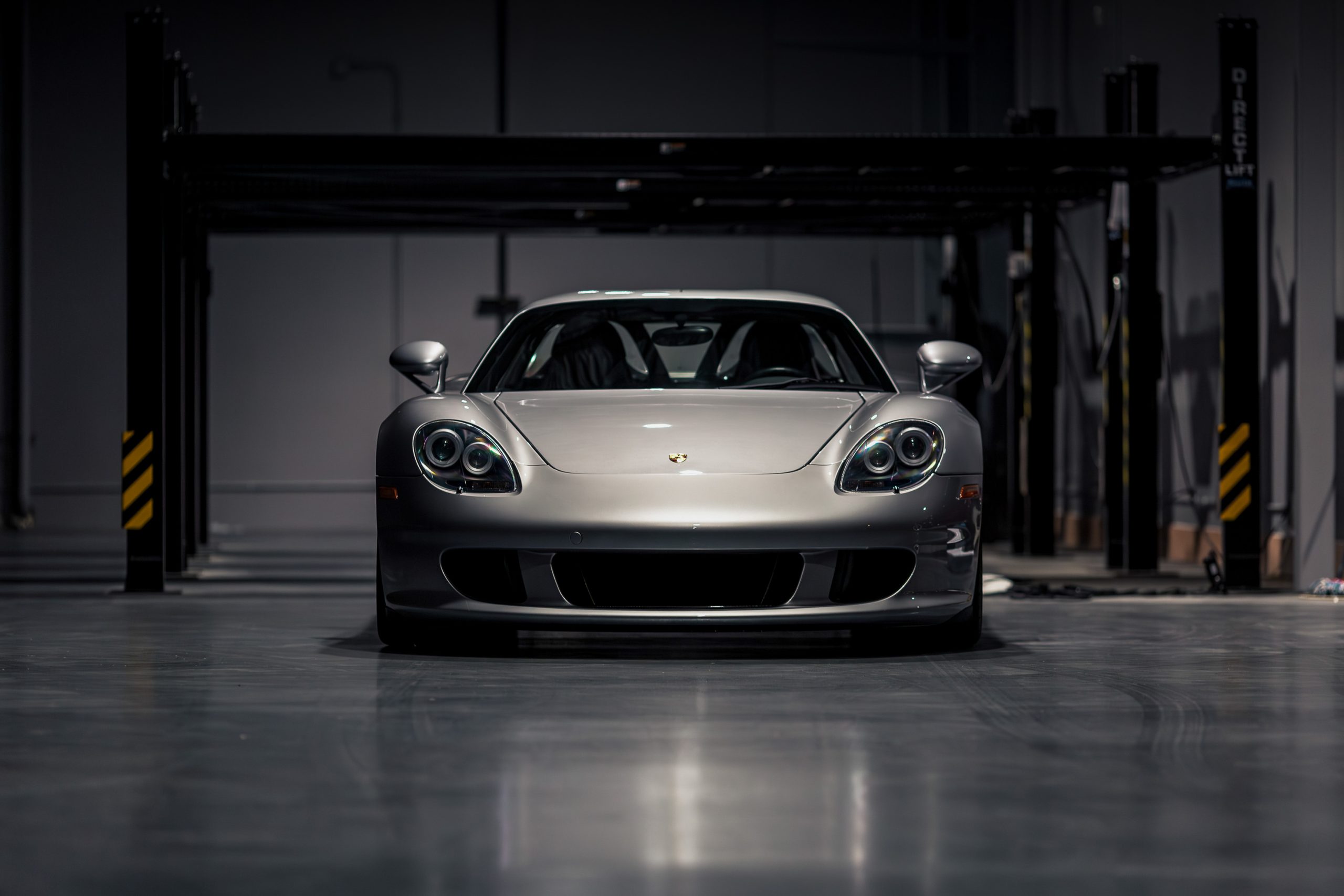Porsche 924/928/944/968 - The Ultimate Guide
Porsche's Transaxle Era & Models
A Primer / Porsche 924 / Porsche 944 / Porsche 968 / Porsche 928
The transaxle era plays an important role in Porsche history. The Porsche transaxle cars, of which the innovative but misunderstood 924 was the forerunner, proved to be successful beyond all expectations for the Stuttgart manufacturer. Created at first as a potential new sports model for Volkswagen, the 924 was dropped by VW when it was well down the development road, so Porsche brought the project back under its own roof. Being developed simultaneously was the 928, and it served Porsche well to produce two cars on similar platforms at the same time. The 928 was developed for an altogether different driver, this model being Porsche’s first foray into the luxury sports car market. Its 18-year lifespan illustrates how successfully the model was reinvented and given ever more performance and luxury. As the 924 neared the end of its production life, its replacement, the sportier 944, was positioned as a higher performer in the range. The 924 and 944 were produced in tandem for a while as the 924 refused to die, but eventually it was phased out and the 944 was introduced with more power and greater appeal. The final model in the transaxle range, the 968, was designed by Harm Lagaaij who was also responsible for the 924 design. He regards the 968 as the best and most refined of the transaxle cars.
The Transaxle Models
A Primer
Between the mid-1970s and mid-1990s, Porsche experimented with a bold departure from its traditional rear-engine layout, creating a family of front-engine, rear-transaxle sports cars that prioritized balance and driving dynamics. This lineup began with the Porsche 924 in 1976 — a lightweight, affordable coupe initially developed with Volkswagen, featuring a front-mounted four-cylinder engine and a rear-mounted transaxle for near-perfect weight distribution. Though modest in power, it laid the foundation for what would become a deeply engineered and innovative series of cars. The Porsche 944, launched in 1982, built upon the 924’s architecture but with Porsche’s own engine and more aggressive styling. It brought serious performance to the lineup, especially in Turbo and S2 variants. By 1992, the Porsche 968 arrived as the final evolution of this platform, with a refined design and a powerful 3.0-liter inline-four engine — one of the largest of its kind in a production car. Parallel to these was the Porsche 928, introduced in 1978 as a luxurious grand tourer powered by a V8. Unlike the others, it was intended as a potential replacement for the 911, offering cutting-edge technology and comfort over nearly two decades of production. Together, these transaxle models represented a unique chapter in Porsche’s history, blending performance, innovation, and everyday usability in ways few expected from the brand at the time.
The Porsche 924

Introduced in 1976, the Porsche 924 marked a radical departure from the brand's traditional rear-engine layout. Developed in collaboration with Volkswagen, the 924 was originally intended as a VW sports coupe, but Porsche took over the project after VW shelved it. The result was Porsche’s first production car with a front-engine, rear-transaxle layout — a configuration that provided near-perfect weight distribution and sharp handling. Power came initially from a 2.0-liter inline-four sourced from Audi, paired with modest performance that garnered mixed reviews from purists.
Despite its humble origins and relatively modest power output, the 924 played a pivotal role in keeping Porsche financially afloat during the late 1970s. It offered sleek styling, impressive fuel economy, and approachable pricing — a Porsche for a new generation of buyers. Later iterations, including the 924 Turbo and the 924S, significantly improved performance and handling, particularly the 924S, which borrowed the 944’s more refined engine. Today, the 924 is appreciated for its light weight and balance, representing the genesis of the transaxle era.
The Porsche 944
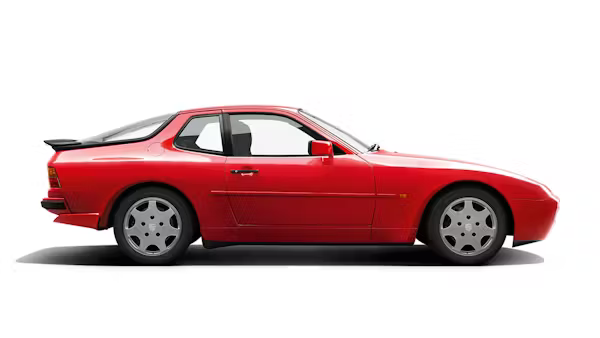
Launched in 1982 as an evolution of the 924, the Porsche 944 was a step forward in both performance and refinement. While it shared the same basic architecture and styling cues as the 924, the 944 featured muscular fender flares, upgraded suspension, and most notably, an all-new 2.5-liter inline-four engine developed by Porsche. This engine offered significantly more power than the 924 and helped the 944 stand on its own as a true sports car rather than a budget offering. The 944 was lauded for its balance, precision handling, and improved interior — all of which made it a favorite among driving enthusiasts and the automotive press alike.
Over the course of its production, the 944 received continual enhancements, including the 944 Turbo (or 951) in 1985, which featured forced induction and performance that rivaled the 911 of the era. The 944 S2, introduced in 1989, bumped displacement to 3.0 liters and delivered naturally aspirated power in a more refined package. By the end of its run in 1991, the 944 had solidified its place as one of the best-handling cars of its time, and it remains a cult favorite among Porsche enthusiasts today.
The Porsche 968
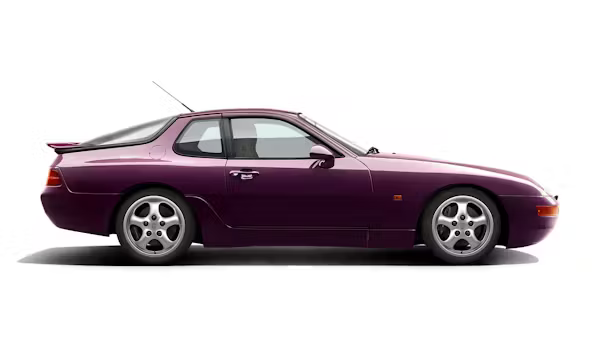
The Porsche 968 arrived in 1992 as the final evolution of the 924/944 lineage. While it shared much of its platform with the outgoing 944, nearly 80% of its components were new or significantly revised. The styling was more in line with Porsche's contemporary design language, borrowing cues from the 928 and the upcoming 993-generation 911. Under the hood, the 968 featured a 3.0-liter inline-four — the largest four-cylinder engine in a production car at the time — with VarioCam variable valve timing and up to 240 horsepower in standard form.
The 968 was available in both coupe and cabriolet formats and was praised for its fluid handling and daily usability. A standout variant was the 968 Club Sport, a lightweight, track-focused version that ditched many luxury amenities to sharpen its performance. Though it never sold in large numbers, the 968 represents the apex of Porsche’s front-engine, rear-transaxle engineering. Its rarity and performance have earned it a dedicated following, and values have been steadily climbing as more enthusiasts recognize its importance in Porsche’s history.
The Porsche 928
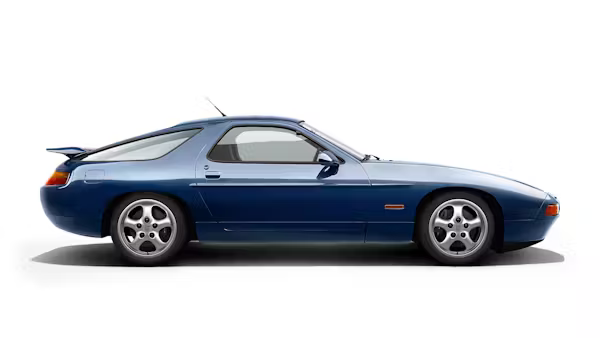
Introduced in 1978, the Porsche 928 was envisioned as the potential successor to the 911 — a bold move that signaled Porsche’s intention to shift toward grand touring luxury. Unlike its transaxle siblings, the 928 featured a powerful front-mounted V8 engine, wrapped in a futuristic and aerodynamic body that blended elegance with cutting-edge design. The car’s transaxle layout provided superb weight distribution, giving the 928 surprisingly nimble handling for such a large and luxurious machine.
Over its 18-year production run, the 928 evolved significantly, receiving larger engines, improved electronics, and refined styling. Variants like the 928 S4, GT, and GTS pushed performance higher, with the final GTS models delivering over 345 horsepower. While the 928 never fully replaced the 911, it carved out a unique niche and developed a devoted fanbase for its blend of performance, comfort, and innovation. Today, the 928 is regarded as one of the most ambitious and technologically advanced cars Porsche ever built, and its V8 power and grand touring demeanor continue to earn it admiration from collectors and enthusiasts alike.
Porsche 924 Basics
Manufacturer: Porsche AG
Production Years: 1976–1988
Production: 152,082 units
Designer: Harm Lagaay
Body style: 2-door 2+2 hatchback/fastback
Layout: Front-engine, RWD
Engines: 2.0 L VW EA831 Inline 4, 2.0 L Turbo VW EA831 Inline 4, 2.5 L Porsche M44/40 Inline 4
Transmissions: 4 or 5 speed manual
Length: 4,200 mm (165.4 in)
Width: 1,685 mm (66.3 in)
Height: 1,270 mm (50.0 in)
Kerb weight: 1,080 kg (2,381 lb)
Premiere: Unveiled on Nov 15 1975
The 924 originated as a contract design by Porsche for Volkswagen, based mainly on readily available parts from the VW parts bin. VW chose to cancel plans late in the project for financial reasons. Porsche then bought the rights to the design and produced the car, having VW assemble the cars at its Audi plant in Neckarsulm. Initial configuration was a 2.0L inline-4 SOHC engine with solid front disc and rear drum brakes. Porsche then proceeded through a series of upgrades to improve the performance of the car to meet the public's expectations of Porsche performance. Upgrades involved better brakes, optional sport suspension, 5-speed transmissions, and more power for the engine. Comfort and convenience upgrades included the addition of AC, power windows, power mirrors and better stereo. Other steps were taken by Porsche to try to improve the car's appeal in the market, starting with special editions such as the Martini Edition in 1977, the Limited Edition in 1978 and the Sebring edition in 1979.
The real boost in performance the 924 needed was achieved with the release of the 924 Turbo, also known as the 931, in late 1979. Compression was reduced slightly from the 924 to handle the boost, and a new head was implemented with better flow characteristics. Boost levels were moderate, 8-10psi. The engine was fitted with an oil cooler for durability. The 931 came with a 5-speed transmission from the start, but had the early-style disc/drum brakes. It became clear that the increased performance of the 931 needed the better, later, optional 4-wheel vented disc brakes. Later versions of the 931 received improved digital ignition systems.
In 1981 the 924 Carrera GT was released, known as the 937. Cosmetically, it foreshadowed the 944, with a wide front end to cover the wider track, but the rear width was strictly increased through the use of small add-on flares, as seen currently on the 911 GT2 cars. The extra bodywork was all plastic, not fiberglass. The better brakes were standard, but with slightly different brake circuitry due to the different suspension geometry. 16" Fuchs rims and upgraded suspension and brakes were standard. The engine made substantially more power than the 931 thanks to an intercooler, higher boost, and lower compression. The intercooler was mounted integral to the charge tube going from the turbo to the throttle body, right over the cam cover, to minimize turbo lag. However, getting airflow to this location was difficult, and resulted in the scoop on the hood over the cam cover. Only 406 of these were made, and none officially imported to the US, though a handful made it in through private importers (grey-market).
Later on the Carrera GTS and GTR were released. These were not referred to by distinct model numbers, as they were developed from the 937 Carrera GT, and so are also considered 937's. They were, by contrast with the other models, built at Porsche in Zuffenhausen. The GTS had an intercooler in the nose, as later reused in the 944 Turbo, with fixed headlights behind plexiglass covers forced by removal of the headlight linkage to accommodate the intercooler ducting. Weight was lowered and power improved, but the car was still street-legal, at least in Europe. 59 GTS's were made, with 15 in Club Sport configuration - further weight-reductions, rollcage, etc. The GTR was a pure racecar, developed for the endurance races of LeMans, Sebring, and the like, making 375bhp and beyond, and weighing even less. Every detail of the cars were heavily modified for racing, especially the suspension, with plenty of details for endurance racing, like air jacks, dry-break fuel cell refueling, etc. The roll cages were particularly neat, being constructed of welded alloy, well gusseted and bolting into the car's body at 14 points. A matching strut tower brace added further stiffening in front of the firewall. The intercooler for the GTR was much larger besides than the GTS, but also located in the nose of the car. Only 18 GTR's were constructed.
Porsche 924 Models
There were four core production Porsche 924 models over the years. Below we take a look at them in detail. The 924 Carrera GTP, GTS and GTR make up the core Porsche 924 specials, all three racing variations made in very limited numbers. Only six GTP cars were produced in 1980, three of which were special LeMans race cars. The cars had the 2.0L turbocharged 924 engine and increased boost to increase output to 320 HP and a top speed of 180 mph. Porsche built fifty-nine of the Carrera GTS in 1981, this ultimate street 924 GTS Club Sport included some race parts, but even in street trim had such things as an aluminum roll cage, lightened body, 935 seats, 911 Turbo brakes, and 280 horsepower. The Carrera GTR was the ultimate 924 Street/Race Car in 1981. The GTR had larger flares, larger wheels and tires, improved brakes and a whopping 375 horsepower from the 2.0L turbo dry-sump engine.
Porsche 944 Basics
Manufacturer: Porsche AG
Production Years: 1982 - 1991
Production: 173,238 units
Designer: Harm Lagaay
Body style: 2-dr coupé/ convertible
Layout: Front-engine, RWD
Engines: 2.5 L M44/40 Inline 4, 2.5 L M44/51 Inline 4, M44/52 turbo Inline 4, 2.7 L M44/12 Inline 4, 3.0 L M44/41 Inline 4
Transmissions: 3 or 5-speed manual
Wheelbase: 2,400 mm (94.5 in)
Premiere: September 16 1981, IAA Frankfurt Motor Show press day
The car was the brainchild of the newly appointed Peter Schutz, the CEO of the Porsche company. He decided to debut the new 944, which was the replacement for the 924, at the 24 Hours Le Mans race of 1981. The project was greenlighted in 1980, in response to dropping sales of the Porsche 924. Although it was basically a 924 with a proper Porsche engine, body styling and trim, the 944 looked like a more grown up car than the 924. Improvements over the out-going 924 were plain to see - beginning with the flared front and rear wheel arches. These became the trademark of the 944, and pulled in the buyers due to the butch stance and powerful presence they gave the car. Other differences were small but significant - on US models, the ugly 924 side reflectors were replaced with smooth, bumper-line examples. A rear spoiler, lining the lift-glass, made the rear-end look more functional and sporty. Drag coefficient was reduced to 0.35 over the 924, and the body panels were zinc-coated in all markets to prevent corrosion.
This Porsche 944 was fitted with the new 2.5 liter four cylinder engine derived from Porsche's V8. There were however many changes made in the transition from half V8 to new inline 4 cylinder. The four cylinder engine had been fitted with dual counter-rotating balance shafts after the original 1904 design by British engineer Frederick Lanchester and improved upon by Japanese car maker Mitsubishi. The 944 engine got improvements over the years, including turbocharging being added to get even more power from the unit for the 944 Turbo models.
The Porsche 944 was Porsche's largest-selling front-engined coupe.The launch of the 944 traded heavily upon the new car being a 'brand new Porsche model', in an attempt to bury the image of all front-engined Porsches not being 'real' Porsches - a fate which had befallen the 924. The car was released for sale to European markets in November 1981, with the UK getting their quota in April 1982, and the USA in May 1982. Sales of the base 944 coupe went through the roof, with a massive 26,800 944s being produced by the end of 1982. To put this figure into context, the entire Porsche company made just 28,000 cars in total in 1981. Before the Boxster and Macan, the 944 was heralded as the savior of Porsche - the massive cash reserves that this model made during the 1980s kept the company afloat (just) during the world recession of the early 1990s.
Several updates and models were released over the life of the 944 and while the 944 was intended to last into the 1990s, this plan didn't not happen. Major revisions planned for a 944 S3 model were eventually rolled into the Porsche 968 instead, which replaced the 944. The Porsche 944 was a successful model and was available as both a coupe and cabriolet in naturally aspirated and turbocharged forms. Even today, it is considered the best handling RWD (rear wheel drive) car of all time and if you can get your hands on one you won't be disappointed.
Porsche 944 Models
There were six core (mass produced) production Porsche 944 models over the years. Over the years, performance and looks changed as Porsche improved the core 944 platform. Below we take a look at the production 944 models in detail. Several limited and special edition Porsche 944s were made over the life of the model. There were a few race cars made, most importantly the Porsche 944 Turbo Cup cars for the series racing created for the 944. There was also the Celebration model in 1988 and the Turbo S model also from 1988. The final special edition 944 was the S2 SE, UK only special edition, of which only 15 were ever made. See below for all the details.
Porsche 968 Basics
Manufacturer: Porsche AG
Production Years: 1991 - 1995
Production: 12,780 units
Designer: Harm Lagaay
Body style: 2-door coupé & convertible
Layout: Front-engine, RWD
Engines: 3.0 L M44/12 16-valve Inline 4, 3.0 L 8-valve turbocharged Inline 4
Transmissions: 6-speed manual, 4-speed tiptronic auto
Wheelbase: 2,400 mm (94.5 in)
Curb weight: 1,400 kg (3,100 lb)
Premiere: September 12, 1991 IAA Frankfurt Motor Show press day
The 968 was almost called the 944 "S3", an upgrade to the "968 S2" that Porsche had introduced in 1989. With over 80% of the 944's components new or modified, Porsche decided instead to introduce the car as a new model, hence the 968 was born. Production was moved from the Audi plant in Neckarsulm (where the Porsche 924 and Porsche 944 had been made) to Porsche's own factory in Zuffenhausen. The 968 was produced from 1992 to 1995 and was marketed as the replacement for the Porsche 944. When production ceased in the 1995 model year, it represented the end of a line started almost 20 years earlier with the introduction of the Porsche 924. By late 1991, the 968 was ready. It retained all the good bits of its predecessor, while significantly improving appearance, handling, and performance. The 968 was introduced in September 1991 at the Frankfurt Motor Show as a 1992 model.
The big news new model was the engine. The 968 got an updated version of the 944’s straight-4 engine, now displacing 3.0 L and producing 236 bhp @ 6200 rpm and 225 lb-ft @ 4100 rpm of torque. Changes to the 968's powertrain also included the VarioCam variable valve timing system, a new dual resonant induction, a new exhaust systems with a rare metals catalytic converter, a dual-mass flywheel, and updated engine management electronics. A new 6-speed manual transmission was offered, as well as a dual-mode Tiptronic automatic. The options were plentiful, the most interesting of which was the M030 suspension.
The 968's styling somewhat resembled the 928 although it looks considerably more like a blend of the 993 911, which did not appear until the end of the 968's production and a 944 S2. Like the 944, the 968 was sold as both a coupe and a convertible. Much of the 968's chassis was carried over from the 944S2, which in itself shared many components with the 944 Turbo (internally numbered 951). Borrowed components include the Brembo-sourced 4-piston brake calipers on all four wheels, aluminum semi-trailing arms and aluminum front A-arms, used in a MacPherson strut arrangement. The galvanized steel Unibody structure was also very similar to that of the previous models.
Performance models were also released. A street-legal race variant, dubbed Club Sport, appeared in 1994 with a stripped-out interior including racing seats, revised suspension, and larger wheels and tires, but was offered only in Europe. A UK-only version called 968 Sport, a Club Sport model with some comfort features added back in, was produced in 1994 and 1995. Porsche briefly produced a turbocharged version called Turbo S, of which only 15 were produced, and again was only sold in Europe. The 968 Turbo S was capable of 0–60 mph in 4.5 s and top speed of 175 mph. A race variant called 968 Turbo RS was added as well; only 4 were produced and raced with some success.
Over the 4 years of production, only 12,780 cars were sold worldwide, with less than 5,000 shipped to North America. Original sales price started at about $55,000 and dropped dramatically by the end of production, as lower priced Japanese competition, and the unwillingness of the public to embrace a front engine 4 cylinder Porsche spelled doom for the 968. The 968 was Porsche’s last new front-engined vehicle before the introduction of the Cayenne SUV in 2003. It was sold alongside the 928 GTS through 1995 when both models were dropped.
Porsche 968 Models
There were three core Porsche 968 models over its relatively short life. The base Porsche 968 came in both a coupe and cabriolet body and ran from 1992 through till 1995. The Turbo RS was a race car that was made for production when it was homologated as the Porsche 968 Turbo S, a very limited edition car for the road. The Porsche 968 CS Coupe and the UK only 968 Sport were lightweight specials that were definitely the cream of the crop. Below we take a look at the 968 models in detail.
Porsche 928 Basics
Manufacturer: Porsche AG
Production Years: 1977–1995
Production: 60,870 units
Assembly: Germany: Stuttgart
Designer: Wolfgang Möbius, Anatole Lapine
Body style: 2-door 2+2 hatchback/fastback coupé /
Layout: Front-engine, rear-wheel-drive / Engines: 4.5 L M28/01–M28/18 V8, 4.7 L M28/19–M28/22 V8, 5.0 L M28/41–M28/47 V8, 5.4 L M28/49–M28/50 V8
Transmissions: 5-speed manual, 3-speed auto, 4-speed auto
Wheelbase: 2,500 mm (98.4 in)
Kerb weight: 1,450–1,620 kg (3,197–3,571 lbs) (approx.)
The 928 development project was started in 1971 and was designed by Porsche as the eventual replacement for the 911. It was the product of a company that had gone through much turmoil in the early 70’s. Ferry Porsche had moved the company on from being a family run business with father-son in-fighting causing loss of focus. A number of senior company members were “encouraged” to move on and a new chief executive was appointed – his name - Dr Ernst Fuhrmann. Previously with the Goertz Piston company, Fuhrmann was the man responsible for the design of the 1950’s Carrera engine (the engine was also used in the 550 Spyder etc).
Fuhrmann believed that Porsche’s long-term future should be built upon Grand Tourers with conventional engines – he went on to de-prioritise the 911 – believing that the 928 would be its successor. History shows us that his views were not necessarily shared, as the 911 continues to be a significant member of the product portfolio – whilst the 928 – despite having a good innings lasted only some 18 years.
The Porsche 928 was unveiled at the 1977 Geneva Motor Show to immediate acclaim and went on to be named Car of the Year 1978 – the first time that a sports car has won this accolade. Styled by Anatole Lapine – the hatchback body featured aluminium doors, bonnet and front wings for weight saving. There did not appear to be any bumpers! In fact they were concealed behind the nose and tail sections, which were made of plastic, and matched the body style. Following minor impact – these panels ingeniously bounced back into shape. Aluminium also featured in the heads and block of first V8 from Porsche. Pop-up lamps – allegedly based upon the Lamborghini Miura were a quirky addition that completely changed the personality of the car when raised.
Other innovations included the Weissach axle. This unique variant of the semi-trailing arm suspension design was developed to eliminate oversteer an inherent problem with most cars then caused forced toe-out on braking / cornering. Sometimes called “passive rear wheel steering” this innovation dynamically changes the toe-in eliminating oversteer to such an extent that it can actually induce understeer! Weissach was the Porsche R&D centre where this suspension was developed.
As Porsches flagship car in its bid to move the business more up-market and capture North American sales the 928 truly was a Grand Tourer and was a great success. Its detractors however – the traditionalists – who believe that rear engined Porsches were the only true Porsches fought hard and continued to buy 911’s in significant volumes. Porsches response was to develop the 928S launched in 1979. The fuel crisis had abated and the full size 4.6 Ltr V8 moved the 928S into 300 bhp territory and beyond 150mph. A number of versions ensued with the S2, the revised S2 in 1985 – no S3 though, the S4 and the 330bhp 928GT. Finallly in 1992 Porsche launched their last 928 – the 928GTS a 350 bhp 170 mph super-car.
Production finally finished in 1995. The 928 had lost its way somewhat and never did what was originally intended – replace the 911. Historians write that it never “captured the spirit” of the 911 which went on to regain its lost ground and, along with other brands, was just too attractive to ensure the continuation of the 928. The GTS always struggled to sell well with 911 traditionalists and other competing cars from BMW and Mercedes dominating market share.
Porsche 928 Models
The Porsche 928 had to be more refined, comfortable, and luxurious than any prior Porsche so as to compete with Mercedes and BMW. The clean-sheet design gave us a wonderful car with a V8 up front. Over the years, the Porsche 928 saw several updates and improvements. Below, follow along the journey with our in-depth (ultimate) model guides on every production-model 928. Like any Porsche, there were also a number of special Porsche 928 models over the years. These included both factory specials and concepts as well as some tasty third-party 928 creations. Below we take you through the in-depth guides on every one we could find.
Join Our Porsche Community
Sign up for our weekly Porsche newsletter. The latest Porsche news, rumors, reviews and more delivered to your inbox. Cool Porsche stuff perfect for the flat-six obsessed.


